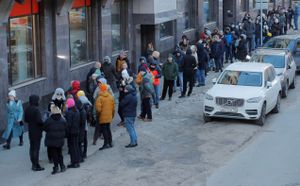Sunita Williams and Barry Wilmore, who set out on what was supposed to be merely an eight-day mission, now find themselves enduring an astonishing seven-month stay aboard the International Space Station (ISS). The pair launched aboard Boeing's Starliner spacecraft on June 5, 2024, arriving at the ISS just the next day. But as fate would have it, post-launch technical problems—including thruster malfunctions and helium leaks—forced NASA to reconsider their return plan.
Originally, they were due back on Earth shortly after their arrival, but comprehensive checks revealed the Starliner would not be safe for the astronauts to return home. Instead, NASA announced it would bring the spacecraft back empty, choosing instead to send Williams and Wilmore back aboard SpaceX's Crew Dragon spacecraft. NASA is now planning for their return to Earth no later than March 2025, drawing public attention and debates concerning long-term space travel and its impacts.
Despite this prolonged space sojourn, Williams expressed positivity about her experience. Speaking to students from Needham High School, she highlighted her adjustment to life on the ISS, where her daily activities involve conducting experiments and research. Amidst the challenges, Williams affirmed, "This is my happy place. I love being up here in space. It’s fun—it adds a little different perspective." Her perspective is not just limited to her professional responsibilities, but she emotionally remarked on Earth's collective predicament, saying, "It’s really difficult for me to understand people on Earth not getting along… it’s the one planet we have and we should all really be happy we are there together."
Concerns about the astronauts' health have naturally arisen as they navigate the exceptional physical challenges of extended space life. Williams candidly shared, "I’ve been up here long enough right now I’ve been trying to the memory of what it's like to walk. I haven't walked. I haven't sat down. I haven't laid down. You don’t have to. You can just close your eyes and float where you are right here." This poignant statement sheds light on the drastic alterations to their daily functions, raising pertinent questions about the long-term effects of zero gravity on human bodies.
Despite the tribulations, NASA remains optimistic. Steve Stich, manager of the NASA Commercial Crew Program, provided transparency on the situation, explaining, "Fabrication, assembly, testing, and final integration of a new spacecraft is a painstaking endeavor..." NASA has also updated their initial plans for Crew-9, reducing the number of astronauts on the incoming SpaceX Dragon mission scheduled for September to accommodate the return of Williams and Wilmore.
Echoing Williams’ sentiments, Stich extended thanks to SpaceX teams dedicated to enabling their safe return home, affirming the collaborative spirit on the ISS: "We appreciate the hard work by the SpaceX team to expand the Dragon fleet..." These events have not gone unnoticed by both the public and political figures back on Earth. Former President Donald Trump took to Truth Social, saying, "I have just asked Elon Musk and @SpaceX to 'go get' the 2 brave astronauts who have been virtually abandoned... Good luck Elon!!!" His words have generated buzz, igniting discussions about the bureaucratic elements involved with space travel.
The saga doesn't end with Williams and Wilmore’s anticipated return. With NASA's plans pivoting to support the burgeoning commercial space sector, the broader objective is to transition space travel from governmental to private enterprises, effectively reducing reliance on foreign launches—a dynamic shift initiated with the retirement of NASA’s space shuttle program back in 2011. The Crew Dragon spacecraft itself marks the new era, having previously facilitated multiple successful missions since its debut. The success of this mission is key to reassessing the future of space travel and exploration.
To sum it up, Williams and Wilmore endure watching Earth from afar, tethered to their responsibilities and duties, amid unforeseen challenges. Their next steps depend not only on technology to bring them home safely but also on their resilience—a compelling story of human perseverance amid the vastness of space.



